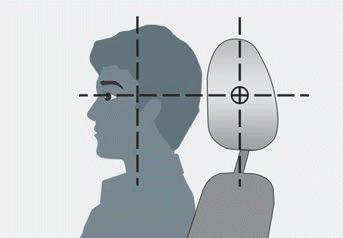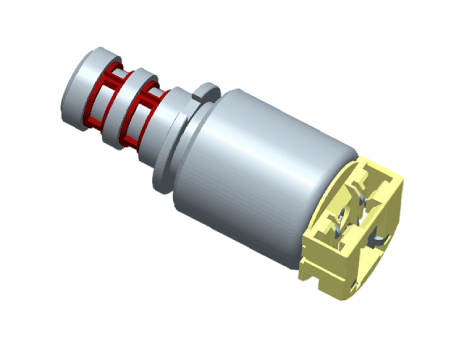Hyundai Venue: Hydraulic System / Torque Converter Control Solenoid Valve (T/CON_VFS). Description and operation
Hyundai Venue (QX) (2020-2025) Service Manual / Automatic Transaxle System / Hydraulic System / Torque Converter Control Solenoid Valve (T/CON_VFS). Description and operation
| Description |
| • |
Torque converter control solenoid valve (T/CON_VFS) is attached to the
valve body.
|
| • |
This variable force solenoid valve indirectly controls the hydraulic
pressure inside the torque converter.
|
 Valve Body. Repair procedures
Valve Body. Repair procedures
Replacement
•
If necessary replace the valve body, hydraulic adjustment is
needed, replace the automatic transaxle assembly...
 Torque Converter Control Solenoid Valve (T/CON_VFS). Specifications
Torque Converter Control Solenoid Valve (T/CON_VFS). Specifications
Specifications
▷ Control type : Normally low type
Shape
Items
Specifications
Control current (voltage) [mA]
0 - 850
Supply pressure [kpa (kgf/cm², psi)]
539...
Other information:
Hyundai Venue (QX) (2020-2025) Service Manual: Side Airbag (SAB) Module. Description and operation
Description The Side Airbags (SAB) are installed inside the front seat and protects the driver and passenger from danger when side crash occurs. The SRSCM determines deployment of side airbag by using Side Impact Sensor (SIS) signal...
Hyundai Venue (QX) (2020-2025) Service Manual: Parking Brake Lever. Repair procedures
Removal 1. Disconnect the negative (-) battery cable. 2. Release the parking brake. 3. Remove the floor console assembly. (Refer to Body - "Floor Console") 4...
Categories
- Manuals Home
- 1st Generation Venue Owners Manual
- 1st Generation Venue Service Manual
- Type B, C
- Automatic Door Lock and Unlock Features
- Remote Key
- New on site
- Most important about car
Head Restraints
The vehicle’s front and rear seats have adjustable head restraints. The head restraints provide comfort for passengers, but more importantly they are designed to help protect passengers from whiplash and other neck and spinal injuries during an accident, especially in a rear impact collision.
WARNING
To reduce the risk of serious injury or death in an accident, take the following precautions when adjusting your head restraints:
Always properly adjust the head restraints for all passengers BEFORE starting the vehicle. NEVER let anyone ride in a seat with the head restraints removed or reversed.
Copyright © 2025 www.hvenueqx.com

